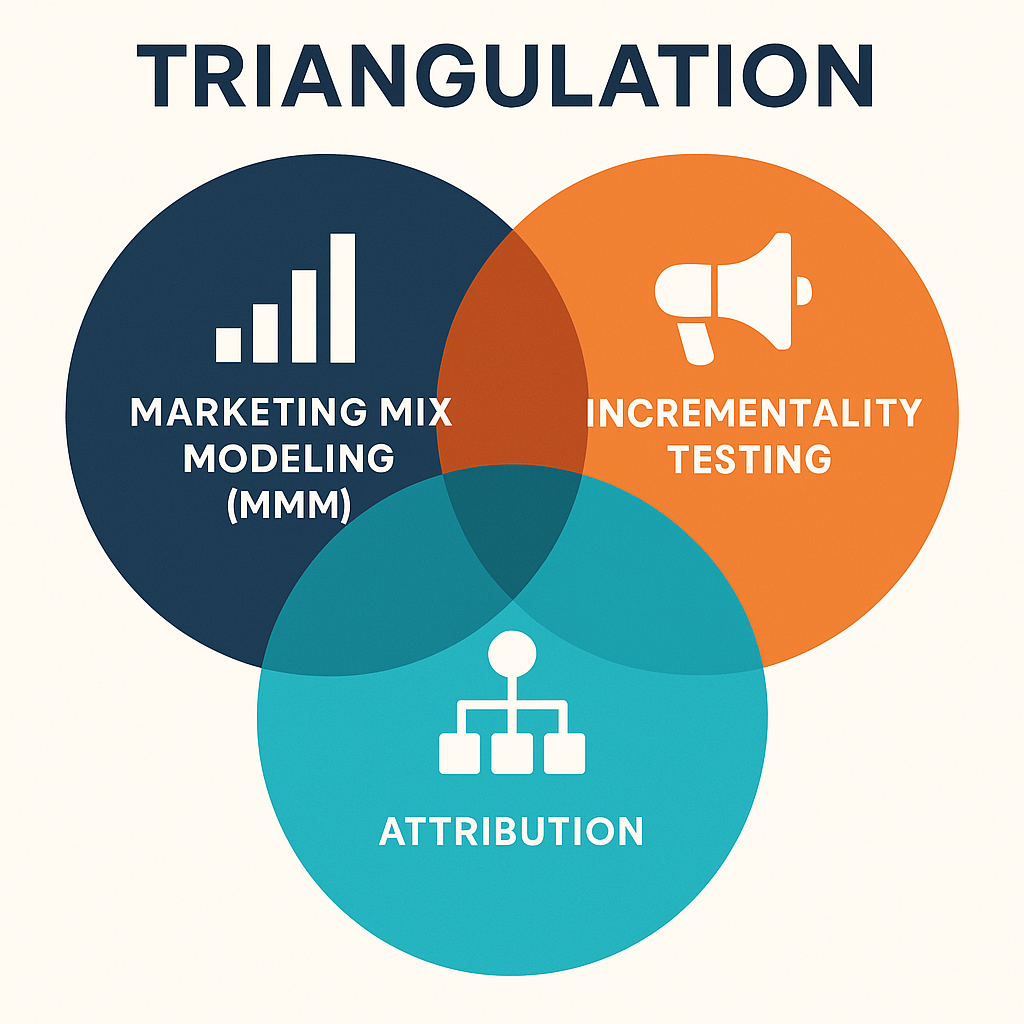In the ever-evolving world of digital marketing, understanding how various strategies and campaigns contribute to overall business performance can be a challenging task. One term that often comes up in this context is “triangulation.” But what does it mean, and how does it apply to areas like Marketing Mix Modeling (MMM), Incrementality Testing, and Attribution? Let’s break it down in simple terms.
What is Triangulation?
Triangulation is a method used to validate data and ensure that insights are accurate by looking at the same information from multiple perspectives or sources. Imagine you’re trying to find the best route to a destination. If you check Google Maps and then ask a local for directions, you’re essentially triangulating your route. In marketing, triangulation helps gather a more comprehensive view of how different factors influence customer behavior and, ultimately, your bottom line.
Triangulation in Digital Marketing
In digital marketing, triangulation can refer to the way marketers combine different methods and data sources to get a clearer and more accurate picture of campaign performance. It often involves three key areas: Marketing Mix Modeling (MMM), Incrementality Testing, and Attribution. Let’s take a closer look at each.
1. Marketing Mix Modeling (MMM)
MMM is a statistical analysis technique that helps marketers understand the impact of various marketing channels on sales or other key performance indicators. Essentially, it looks at historical data to assess how different factors—like advertising spend, promotions, or seasonality—have historically influenced sales.
In the context of triangulation, MMM provides one perspective. Think of it as providing a broad, overview map of how different marketing tactics work together. However, MMM alone doesn’t capture granular, real-time data, which is where other methods come into play.
2. Incrementality Testing
Incrementality Testing involves running experiments to identify what lift (or increase in performance) can be attributed to specific marketing efforts. For example, if you launch a new ad campaign, you might measure sales in a test group exposed to the campaign compared to a control group that wasn’t.
By using this testing method, marketers can pinpoint the actual contribution of a campaign to sales, separate from other factors affecting performance. This testing provides a more focused look at the immediate impact of specific actions and can help validate insights derived from MMM.
3. Attribution
Attribution takes things a step further by trying to assign credit for conversions to the various touchpoints along the customer’s journey. For example, a customer may first hear about your brand through a social media ad, and then later receive an email before making a purchase. Attribution models help marketers understand which channels were most effective in influencing that purchase decision.
In the triangulation context, attribution builds on the insights gathered from both MMM and Incrementality Testing. By synthesizing these perspectives, marketers can develop a more nuanced view of consumer behavior and campaign effectiveness.
Why is Triangulation Important?
The digital marketing landscape is complex and constantly changing. Relying solely on one source of data can lead to misguided decisions. Triangulation allows marketers to cross-verify their findings across multiple methodologies, leading to better-informed strategies and more effective campaigns.
By combining insights from MMM, Incrementality Testing, and Attribution, marketing teams can:
- Gain comprehensive insights into the overall impact of their marketing efforts.
- Identify and refine the most effective channels and campaigns.
- Optimize budget allocation to maximize ROI.
- Drive more informed decision-making based on a variety of data points.
Conclusion
In summary, triangulation in digital marketing is about harnessing multiple techniques—like Marketing Mix Modeling, Incrementality Testing, and Attribution—to develop a clearer understanding of how marketing efforts contribute to business success. By approaching analysis from different angles, marketers can derive more robust insights and make better decisions that drive results. So, the next time you’re delving into your campaign performance, remember, just like finding directions, sometimes you need to check multiple sources for the best route to success!

